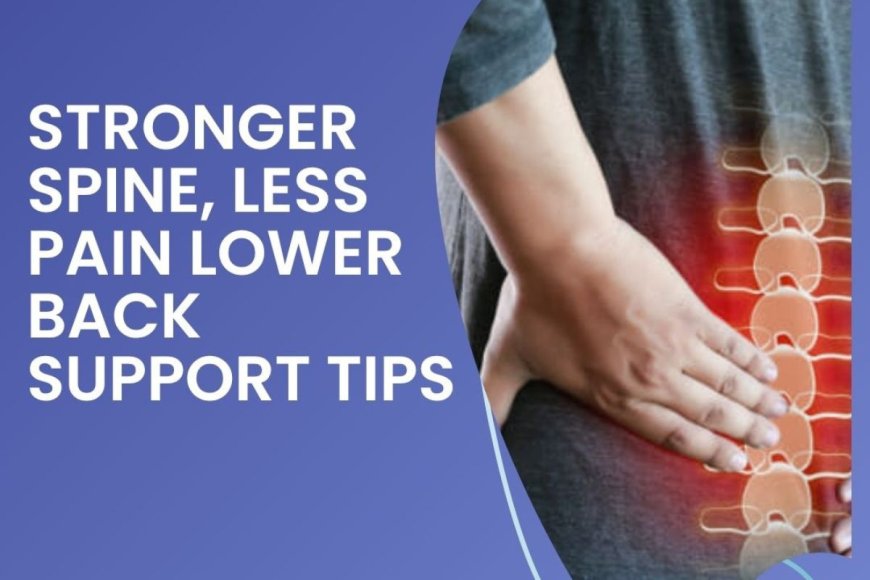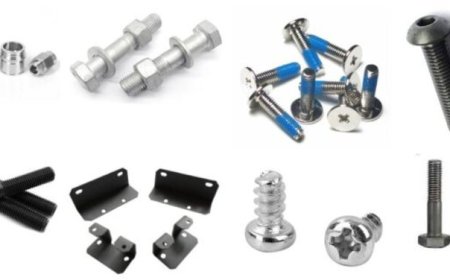Lower Back Pain: The Role of Ergonomics
Discover how ergonomics can alleviate lower back pain. Learn practical tips for optimizing your workspace, improving posture, and reducing strain to promote comfort and prevent injury.

Lower back pain affects millions of people worldwide, making it one of the most common reasons for missed workdays and decreased quality of life. While there are various causes of lower back pain, poor ergonomics in our daily activities particularly in workplace settings plays a significant role in both the development and persistence of this condition.
Understanding the relationship between ergonomics and lower back pain is crucial for both prevention and effective management. This comprehensive guide explores how proper ergonomic practices can help reduce lower back pain, along with various treatment options including medications for pain management and active pain relief strategies.
Understanding Lower Back Pain and Ergonomics
What is Ergonomics?
Ergonomics is the science of designing and arranging workspaces, products, and systems to fit the people who use them. The goal is to optimize human well-being and overall system performance by reducing strain, fatigue, and injury risk.
The Connection Between Poor Ergonomics and Lower Back Pain
Poor ergonomic practices can lead to:
- Muscle imbalances and weakness
- Increased pressure on spinal discs
- Chronic muscle tension
- Poor posture habits
- Repetitive strain injuries
When we maintain poor postures for extended periods, our spine experiences uneven pressure distribution, leading to inflammation, muscle fatigue, and eventually pain.
Common Ergonomic Risk Factors
Workplace Hazards
- Prolonged sitting in poorly designed chairs
- Incorrect monitor height causing neck and back strain
- Inadequate lumbar support
- Repetitive bending and lifting
- Standing for extended periods without proper support
Daily Life Factors
- Poor sleeping positions and mattress support
- Improper lifting techniques
- Carrying heavy bags on one shoulder
- Extended periods of looking down at mobile devices
Ergonomic Solutions for Lower Back Pain Prevention
Workplace Ergonomics
Desk Setup:
- Adjust chair height so feet rest flat on the floor
- Ensure monitor is at eye level to prevent neck strain
- Use a chair with proper lumbar support
- Keep frequently used items within easy reach
Movement and Breaks:
- Take regular breaks every 30-60 minutes
- Perform simple stretching exercises
- Alternate between sitting and standing if possible
- Use proper lifting techniques for any workplace materials
Home Ergonomics
Sleep Environment:
- Choose a mattress that provides adequate support
- Use pillows that maintain proper neck alignment
- Sleep in positions that maintain natural spine curves
Daily Activities:
- Practice proper lifting techniques (bend knees, not back)
- Use both hands when carrying heavy items
- Maintain good posture while using electronic devices
Pain Management Strategies
Active Pain Relief Approaches
Active pain relief involves engaging in specific activities and exercises that help reduce pain and prevent its recurrence:
Physical Therapy Exercises:
- Gentle stretching routines
- Core strengthening exercises
- Posture correction techniques
- Low-impact aerobic activities
Movement-Based Therapies:
- Yoga and tai chi
- Swimming and water exercises
- Walking programs
- Ergonomic training sessions
Medications for Pain Management
When ergonomic improvements and active pain relief methods need additional support, pain management medicine can provide significant relief:
Over-the-Counter Options:
- Nonsteroidal anti-inflammatory drugs (NSAIDs)
- Acetaminophen for mild to moderate pain
- Topical pain relievers
Prescription Medications: For more severe cases, healthcare providers may prescribe stronger pain management medications. Tapentadol tablets are one example of prescription pain medication that may be recommended for moderate to severe lower back pain when other treatments haven't provided sufficient relief.
Important Considerations:
- Always consult with a healthcare provider before starting any medication
- Follow prescribed dosages and instructions carefully
- Be aware of potential side effects and drug interactions
- Use medications as part of a comprehensive treatment plan
Comprehensive Treatment Approach
Combining Ergonomics with Medical Treatment
The most effective approach to managing lower back pain typically involves:
- Implementing proper ergonomic practices
- Engaging in active pain relief strategies
- Using appropriate medications for pain when necessary
- Regular monitoring and adjustment of treatment plans
Long-term Management
Successful long-term management requires:
- Consistent application of ergonomic principles
- Regular physical activity and exercise
- Stress management techniques
- Ongoing communication with healthcare providers.
Precautions and Safety Considerations
Ergonomic Implementation
- Make gradual changes to allow your body to adapt
- Don't ignore persistent or worsening pain
- Ensure any equipment modifications are stable and safe
- Consider professional ergonomic assessments for complex situations
Medication Safety
- Never exceed recommended dosages
- Inform healthcare providers of all medications and supplements
- Be aware of potential interactions with other medications
- Monitor for side effects and report them promptly
- Store medications safely and securely
Exercise and Movement
- Start slowly with any new exercise program
- Stop activities that cause increased pain
- Warm up properly before exercising
- Use proper form and technique
- Consider professional guidance for exercise programs
Red Flags - When to Seek Immediate Medical Attention
- Severe pain following an injury
- Pain accompanied by numbness or tingling in legs
- Loss of bowel or bladder control
- Fever accompanying back pain
- Progressive weakness in legs
Professional Support and Resources
Healthcare Providers
- Primary care physicians
- Physical therapists
- Occupational therapists
- Ergonomic specialists
- Pain management specialists
Workplace Resources
- Employee health programs
- Ergonomic assessments
- Safety training programs
- Workplace wellness initiatives
Frequently Asked Questions (FAQs)
Q: How quickly can ergonomic changes help with lower back pain?
A: While some people notice improvement within days or weeks of implementing ergonomic changes, significant relief typically occurs over 4-6 weeks of consistent practice. The timeline varies depending on the severity of the condition and individual factors.
Q: Are expensive ergonomic chairs necessary for back pain relief?
A: While high-quality ergonomic chairs can be beneficial, proper adjustment of any supportive chair combined with good posture habits can provide significant relief. The key is ensuring proper lumbar support and maintaining good posture throughout the day.
Q: Can I use pain management medicine long-term for chronic back pain?
A: Long-term use of pain management medicine should always be supervised by a healthcare provider. They can help determine the appropriate duration and dosage while monitoring for potential side effects or dependency issues.
Q: What's the difference between active and passive pain relief?
A: Active pain relief involves engaging in activities like exercise, stretching, and movement therapy. Passive pain relief includes treatments like medications, heat therapy, or massage where you're not actively participating in the healing process.
Q: When should I consider prescription medications like tapentadol tablets?
A: Prescription pain medications should only be considered when recommended by a healthcare provider, typically when over-the-counter options and conservative treatments haven't provided adequate relief for moderate to severe pain.
Q: How do I know if my workspace is ergonomically correct?
A: An ergonomically correct workspace allows you to maintain neutral postures, keeps frequently used items within easy reach, supports natural body alignment, and doesn't cause discomfort during or after work.






































